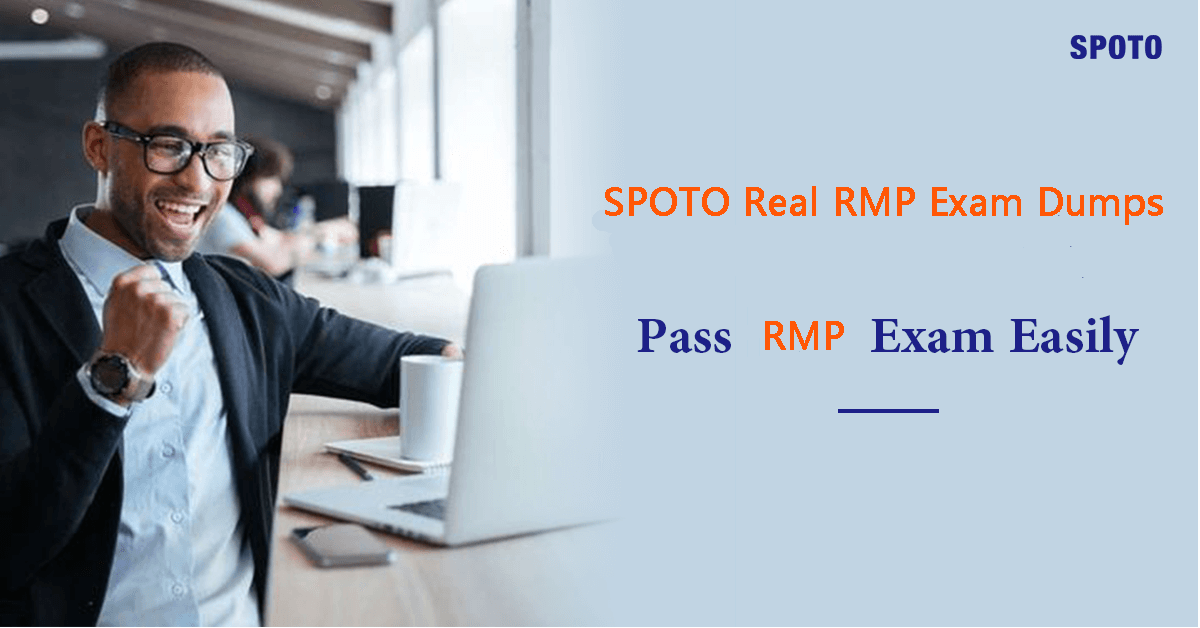If you wish to acquire your PMI Risk Management Professional (PMI-RMP) credential, you must meet the experience and education requirements and clear the PMI-RMP examination, a 170-question, multiple-choice exam. Regardless of how advanced your experience would be in project risk management or education, you are still required to prepare vigorously for the exam. Successful PMI-RMP candidates typically utilize multiple study aids, including courses, self-study, and study groups. They would be spending many hours preparing, so make sure you would be able to leave yourself plenty of preparation time before you would be able to take the exam.
Before we discuss specific tips about studying for the PMI-RMP exam, opt for the SPOTO RMP Exam Dumps to obtain success in the very first attempt.
| Categories | Exam Code | Pass Exam Dumps |
|---|---|---|
| PMI | PMP | |
| RMP | ||
| CAPM | ||
| PgMP | ||
| ACP |
Table of Contents
Tips for clearing the PMI-RMP Exam
1. Gain knowledge regarding the five domains of risk management
The PMI-RMP would have 170 questions; 150 would be scored, and the others are the pretest questions. The exam would be able to split among PMI’s Five Domains of Risk Management, which are mentioned below:
• Perform Specialized Risk Analyses: 14-16 percent.
• Risk Monitoring and Reporting: 19-20 percent.
• Risk Process Facilitation: 25-28 percent.
• Risk Strategy and Planning: 19-20 percent.
• Stakeholder Engagement: 19-20 percent.
2. Being familiar with both qualitative and quantitative risk techniques
Quantitative risk techniques for studying would include the sensitivity analysis, EMV (expected monetary value), and Monte Carlo simulation, Integrated cost/schedule, multi-factor regression analysis, and bowtie analysis. Qualitative risk techniques would be including the probability-impact analysis as well as scenario planning. Don’t forget to perform research for both opportunities and threats. Responding to threats could decrease the chance of project failure, but being able to respond to opportunities could help you out in increasing the project’s value.
3. Begin with the PMBOK Guide and be prepared to move beyond it.
PMBOK Guide deals with Project Risk Management and is considered an excellent resource for each item on the exam. It won’t be enough to go through all the 11 chapters, though you would require to understand and be very familiar with each of the processes and its inputs, tools and techniques, and outputs.
4. Being familiar with stakeholder analysis as it would be relating to risk management
This would be including developing a sense of each stakeholder’s risk attitude. Make sure that a risk attitude would be composed of three different parts:
• How much risk one is willing to take to get a particular reward, or Risk attitude
• How much risk one is willing to withstand, or Risk tolerance
• The point above which additional risk is unacceptable, or Risk threshold.
Knowing how each stakeholder would approach the risk and studying historical information for gauging the organization’s risk approach are critical inputs for establishing an appropriate risk threshold for the project.
5. Being familiar with communication procedures regarding risk management
The key points to make sure of would be to consider both communications for involving stakeholders in defining the risk management strategy and communications for updating stakeholders on risks. Both are considered to be necessary. Stakeholders who wish to help you determine project risks would likely be more engaged in the project and be more eager to hear updates. Ensure that stakeholders and the project team are going to receive regular updates inconsistent format on how project risks will progress.
Now that you have procured all the information regarding passing the PMI-RMP exam, you must opt for the SPOTO RMP Exam Dumps to achieve desirable results.

Latest Passing Report
Read further:









Comments